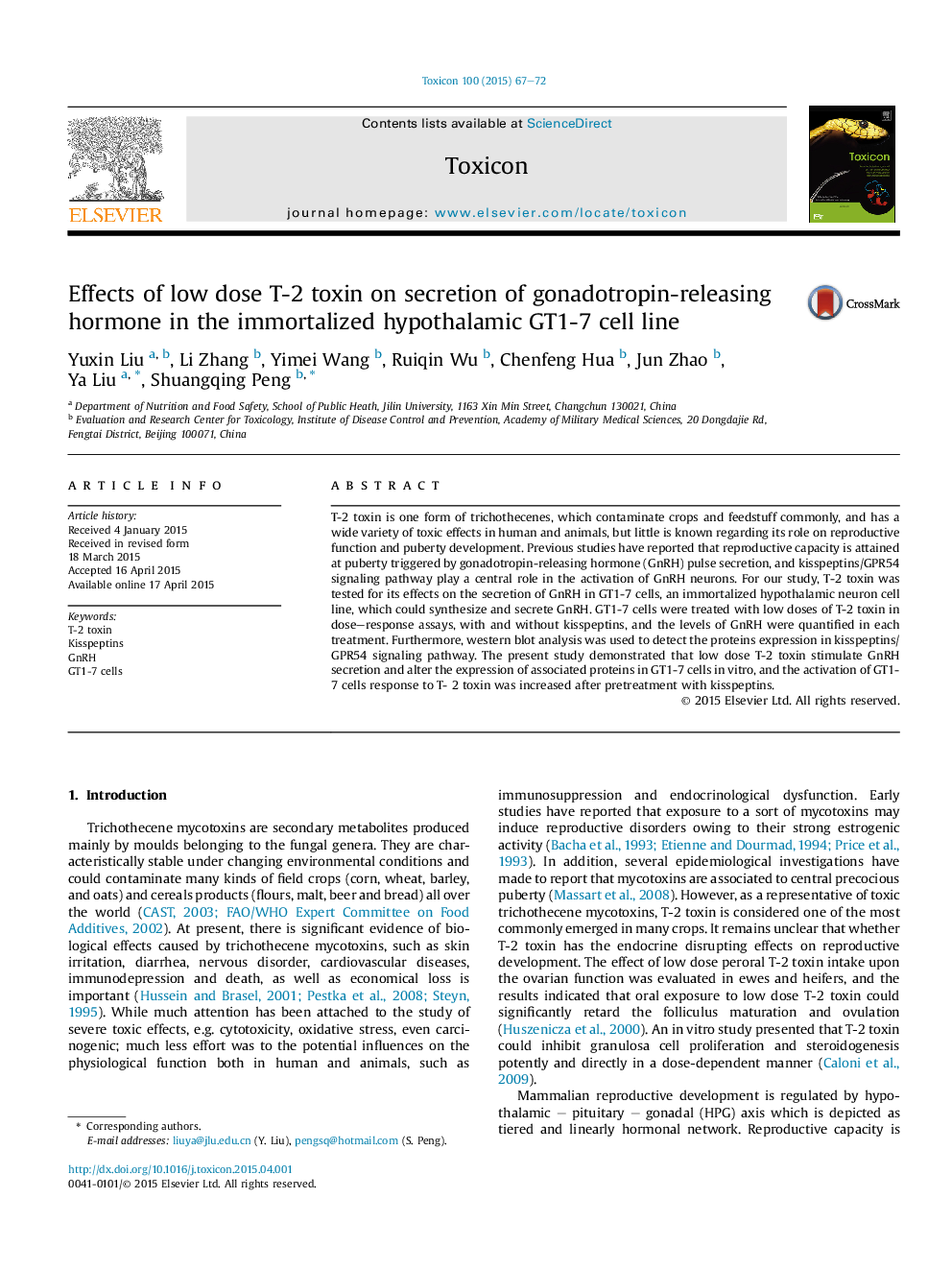| Article ID | Journal | Published Year | Pages | File Type |
|---|---|---|---|---|
| 2064325 | Toxicon | 2015 | 6 Pages |
•GT1-7 cells were exposed with T-2 toxin.•Increasing concentrations of T-2 toxin reduced cells viability.•Low dose of T-2 toxin stimulate GnRH secretion.•Kisspeptins activated and increased sensitivity to T-2 toxin of GT1-7 cells.
T-2 toxin is one form of trichothecenes, which contaminate crops and feedstuff commonly, and has a wide variety of toxic effects in human and animals, but little is known regarding its role on reproductive function and puberty development. Previous studies have reported that reproductive capacity is attained at puberty triggered by gonadotropin-releasing hormone (GnRH) pulse secretion, and kisspeptins/GPR54 signaling pathway play a central role in the activation of GnRH neurons. For our study, T-2 toxin was tested for its effects on the secretion of GnRH in GT1-7 cells, an immortalized hypothalamic neuron cell line, which could synthesize and secrete GnRH. GT1-7 cells were treated with low doses of T-2 toxin in dose–response assays, with and without kisspeptins, and the levels of GnRH were quantified in each treatment. Furthermore, western blot analysis was used to detect the proteins expression in kisspeptins/GPR54 signaling pathway. The present study demonstrated that low dose T-2 toxin stimulate GnRH secretion and alter the expression of associated proteins in GT1-7 cells in vitro, and the activation of GT1-7 cells response to T- 2 toxin was increased after pretreatment with kisspeptins.
